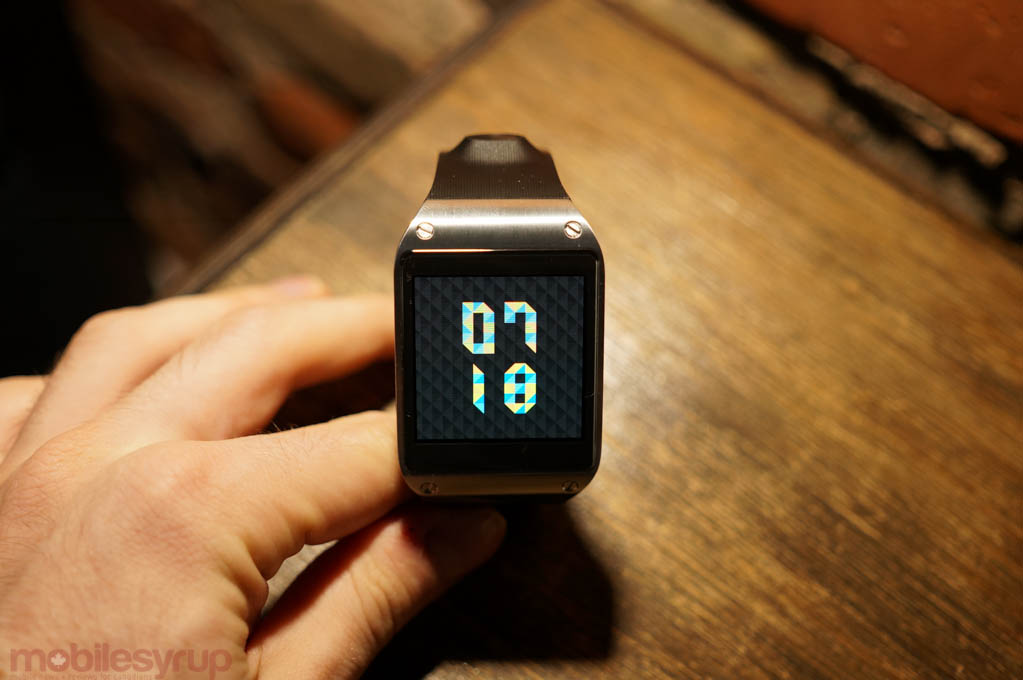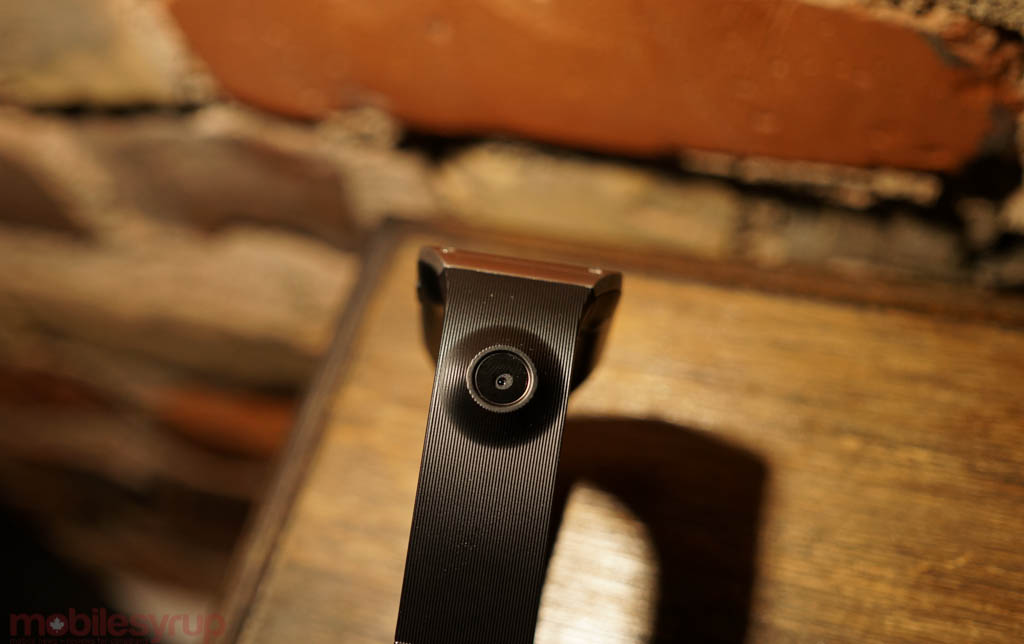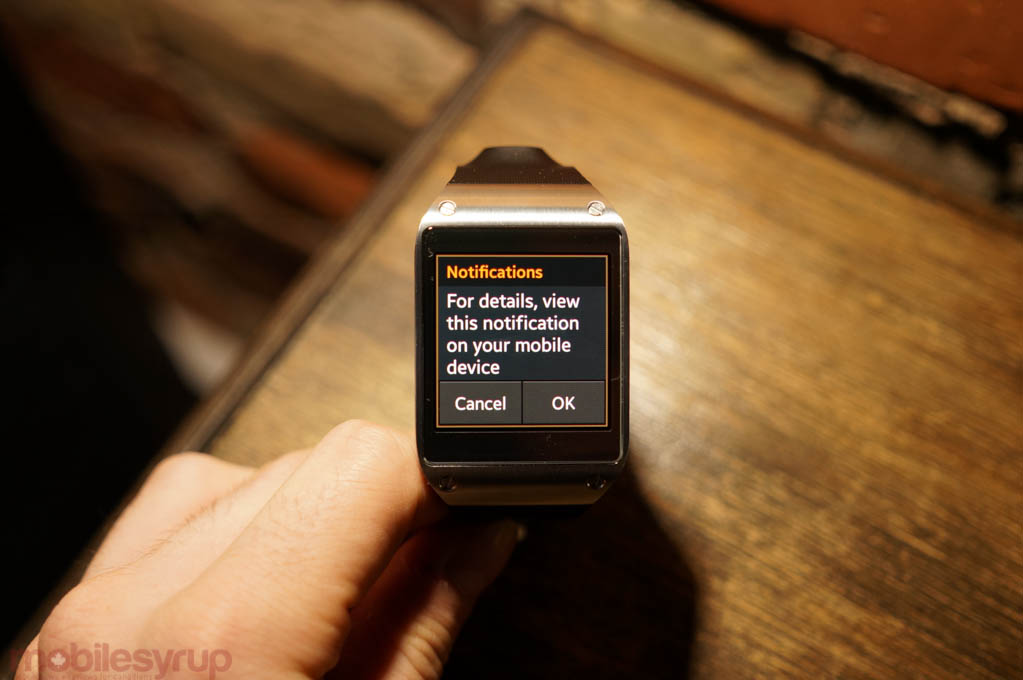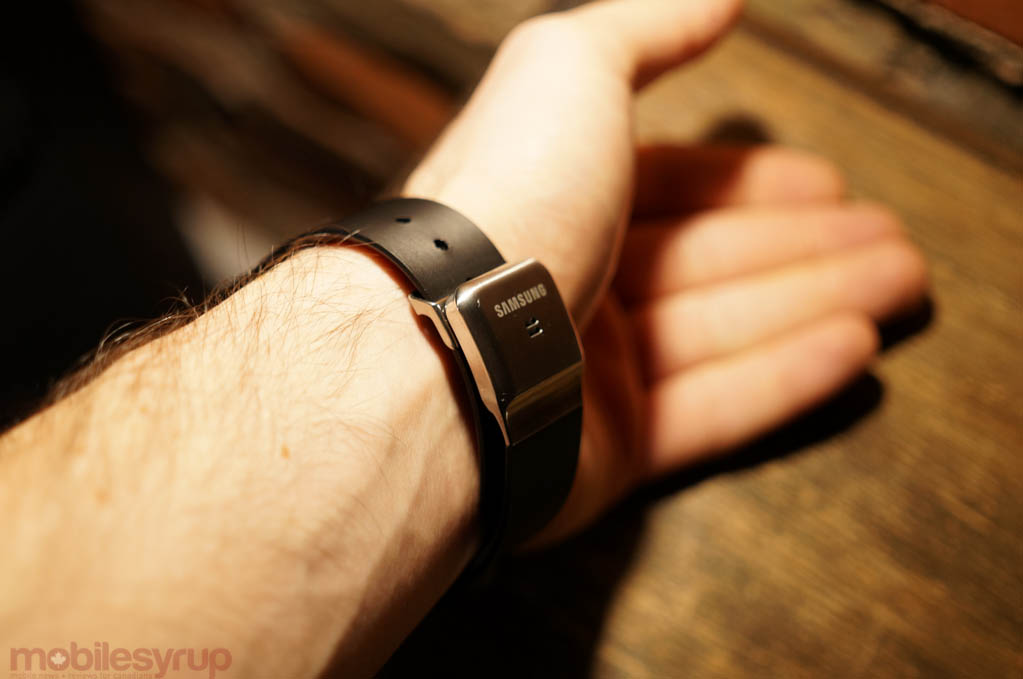
The Samsung Galaxy Gear arrived early last month as a glorified smartphone accessory to the Note 3, a too-eager attempt to capture portions of a nascent market intent on filling the category with purpose.
The Galaxy Gear is a smart watch, a companion to the phone or tablet in your pocket or bag; it tells the time, yes, but receives notifications passed over Bluetooth from your phone. It tells the time, yes, but it also takes photos, counts your steps, initiates calls, records voice memos, and encourages users to download “apps” from third-party developers.

It tells the time, yes, but on a 1.63-inch Super AMOLED screen. It’s powered by a smartphone processor and a smartphone operating system, running smartphone apps on a smartphone screen, shrunk down to proportions useful to only a few.
The Gear is an interesting product, but does a lot of things badly; it is too heavy for many wrists, with a strap that adjusts with difficulty and a chassis that, while well made, feels rigid and out of place. It’s clear that Samsung designed the Gear without consulting the average watch wearer.

The Gear’s touch-based input is also interesting: it responds quickly, and the interface feels at once uniquely Samsung and sufficiently generic. But because it relies so heavily on horizontal and vertical gestures — swiping down from the top opens the 1.9MP camera affixed to the strap; swiping up from the bottom opens the dialler — users must become comfortable with a yet another user experience design.
Samsung has always been good at cramming tremendously powerful hardware into small form factors, and the Gear is no exception. Navigation is smooth and apps launch quickly, but like early versions of smartphone apps they are largely stubs, windows into more capable versions of their Android counterparts.

None of these would be deal breakers if the smart watch was actually qualified to do its main job: conveying relevant information from your smartphone. Instead, at this point in the game, the above image is what you see when alerted about anything outside the immediate Samsung ecosystem. If you use the official Gmail app, Twitter, Facebook, Hangouts, WhatsApp, etc., you won’t get any indication about the content contained within.
Of course, this is likely due to Samsung’s inability to interface directly with these apps, but it severely limits the Gear’s usefulness. You will see snippets of text messages, emails (from the Samsung Email app), and ChatOn IMs, but these are inconsequential compared to the amount of information that isn’t served by the device.

Apps and watch faces are downloaded and managed on the connected smartphone, which at this point is limited to the Galaxy Note 3, via an companion app. There are many settings, and the app requires a Samsung Account to download new content. This is Samsung’s way of hooking you into an ecosystem outside of Google’s, as it has been trying to accomplish on its smartphones for years. But without compelling content — and the apps right now, like Path, Banjo, Evernote, Vivino and others, are underwhelming — there are few reasons to spend time in that ecosystem.
And if you’re looking to use the watch every day, be prepared to charge it every night. The battery life is slated for around a full day, but I would consistently run out of juice by late evening. It is reasonably easy to charge, however, and comes with an NFC-compatible docking station that wraps around the body.

Aside from compatibility issues, which should be addressed fairly soon with updates to the Galaxy Note 2, Galaxy S3 and Galaxy S4, along with the Galaxy S4 mini and Mega in the coming months, the main issue with the Gear is the price. At $329 CDN, this is very much a product aimed at early adopters, a competent piece of hardware constrained by half-baked software and an inaccessible price.
The good news is that software can be updated, and prices lowered. Samsung is clearly committed to the category, and I wouldn’t be surprised to see swift improvements to the interface, along with a big price drop towards the end of the year. But unless you’re already a recent Galaxy smartphone owner and a supporter of emerging technologies, I’d avoid the first generation Gear. Like the Galaxy S2 exponentially improved upon the hardware and software of the original Galaxy S, Samsung is clearly willing to take a hit (and considerable criticism) to get out in front of the pack, and gain the mindshare necessary to make it a success…eventually.
MobileSyrup may earn a commission from purchases made via our links, which helps fund the journalism we provide free on our website. These links do not influence our editorial content. Support us here.


